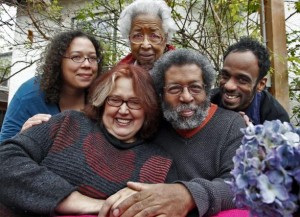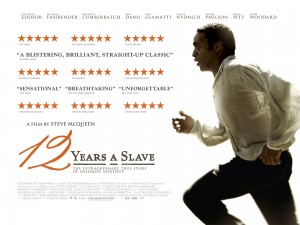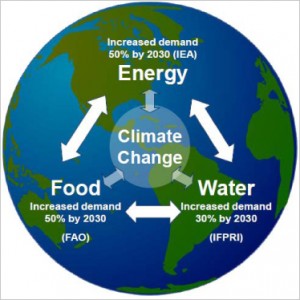Strict Dieting and Excessive Exercising: How Do They Affect Your Health?
 Modern people live in stressful times. We are constantly barraged by new information, connected to our devices such as phones and computers, and have too little time for anything else except our jobs and household chores. Realizing the pressure of everyday lives, many people do their best to stay healthy by eating right, exercising regularly, and avoiding bad habits such as smoking and drinking alcohol. However, some people take their healthy habits too far by exercising excessively, adhering to very restrictive diets, or taking too many vitamins and different supplements. Many well-regarded studies have shown that such behavior, instead of making one healthier, might in fact harm one’s well-being.
Modern people live in stressful times. We are constantly barraged by new information, connected to our devices such as phones and computers, and have too little time for anything else except our jobs and household chores. Realizing the pressure of everyday lives, many people do their best to stay healthy by eating right, exercising regularly, and avoiding bad habits such as smoking and drinking alcohol. However, some people take their healthy habits too far by exercising excessively, adhering to very restrictive diets, or taking too many vitamins and different supplements. Many well-regarded studies have shown that such behavior, instead of making one healthier, might in fact harm one’s well-being.
The United States is a country with one of the highest obesity rates in the world According to 2013 UN report, it ranks second—after Mexico—with 31.8 percent of population being obese. Although in the last few years the obesity growth rate has slowed a little bit, it is still a very alarming issue. Many obese people suffer from a wide array of diseases such as diabetes, cardiovascular diseases, stroke, and generally bad health which negatively affect the overall economy of the country (lower productivity, higher health costs, etc). As such, it is a very positive development when a person decides to take control of his/her health and embark on a healthy lifestyle. However, one of the main rules one needs to remember is that everything is good in moderation.
For example, if a person eats a well-balanced, nutrient-rich diet, he or she rarely needs to consume additional vitamins or supplements because all essential nutrients are already provided by food. According to Cynthia Sass, MPN, RD if one takes an excessive amount of such popular supplements as omega 3 fatty acids, iron, vitamin C, zinc, calcium, to mention just a few, he or she can seriously harm one’s health.
 To illustrate, high levels of omega 3 fatty acids can lead to weakened immune system, too much vitamin C and calcium can cause kidney stones, excessive zinc can cause many undesired effects such as vomiting, diarrhea, and lowering of bad cholesterol, and excessive iron can build up in tissues and organs such as heart and liver. Consequently, it is much better to commit to eating healthy combination of vegetables, proteins, and good carbs than risk overloading one’s system with unnecessary, and potentially hazardous, nutrients. Very strict diets also negatively affect peoples’ health by depleting their bodies of essential nutrients.
To illustrate, high levels of omega 3 fatty acids can lead to weakened immune system, too much vitamin C and calcium can cause kidney stones, excessive zinc can cause many undesired effects such as vomiting, diarrhea, and lowering of bad cholesterol, and excessive iron can build up in tissues and organs such as heart and liver. Consequently, it is much better to commit to eating healthy combination of vegetables, proteins, and good carbs than risk overloading one’s system with unnecessary, and potentially hazardous, nutrients. Very strict diets also negatively affect peoples’ health by depleting their bodies of essential nutrients.
Another extreme behavior to which people become susceptible when trying to living healthfully is excessive exercising. Some people run every day for many miles, others enroll in such demanding fitness programs as CrossFit without being physically prepared for them, and third spend many hours at the gym. Once again, many researchers maintain that health benefits fall dramatically when person puts his or her heart and cardiovascular system under high pressure during strenuous and prolonged exercising. In fact, there are always stories when people collapse or even die when they run marathons, as was a case in Raleigh, NC when two people have died while running Rock’n’Roll half-marathon on April, 13, 2014. Usually, runners’ deaths are cardio-related, as it was in this tragic case.
While everyone should be mindful of their health and committed to eating well-balanced diets, exercising regularly, and avoiding bad habits—one also needs to remember that everything is good in moderation. – Becky Kospanova















 Apart from being a philosophical question, living alone seems to be a practical question for many in Western world. However, first we have to define what it means to live alone. According to most researchers, it means literally living alone: there is no spouse, children, parents, or other relatives living with a person in question in his/her house. It is understandable. Given contemporary economic conditions, many people have to move frequently around the country or world to find a job. As such, close proximity to their families and friends often becomes impossible. A person has to establish a single household. According to Eric Klinenberg, the N.Y.U. sociology professor and author of the book Going Solo, in the 1950s about 22 percent of Americans households were single; nowadays the number is about 50 percent. The increase in single households is quite astonishing.
Apart from being a philosophical question, living alone seems to be a practical question for many in Western world. However, first we have to define what it means to live alone. According to most researchers, it means literally living alone: there is no spouse, children, parents, or other relatives living with a person in question in his/her house. It is understandable. Given contemporary economic conditions, many people have to move frequently around the country or world to find a job. As such, close proximity to their families and friends often becomes impossible. A person has to establish a single household. According to Eric Klinenberg, the N.Y.U. sociology professor and author of the book Going Solo, in the 1950s about 22 percent of Americans households were single; nowadays the number is about 50 percent. The increase in single households is quite astonishing.

 It is undeniable that being literate is one of the most important things a person needs to achieve in order to have a normal existence. From everyday things such as reading food labels, medication information, or household bills to more complex tasks such as reading and comprehending books and more difficult texts, reading enables a person to lead an independent and, hopefully, fulfilling life.
It is undeniable that being literate is one of the most important things a person needs to achieve in order to have a normal existence. From everyday things such as reading food labels, medication information, or household bills to more complex tasks such as reading and comprehending books and more difficult texts, reading enables a person to lead an independent and, hopefully, fulfilling life. The US Department of Education and National Center for Education Statistics differentiate between three types of literacy, “Prose literacy is the knowledge and skills needed to perform prose tasks (i.e., to search, comprehend, and use information from continuous texts, such as paragraphs from stories); document literacy is the knowledge and skills needed to perform document tasks (i.e., to search, comprehend, and use information from non-continuous texts in various formats, such as bills or prescription labels); and quantitative literacy is the knowledge and skills required to perform quantitative tasks (i.e., to identify and perform computations, either alone or sequentially, using numbers embedded in printed materials).” As such, according to their statistics dating from 2003, 22 percent of adults (those who are 16 or older) in the USA perform below basic in quantitative literacy, 14 percent of adults are below basic in prose literacy, and 12 percent in document literacy.
The US Department of Education and National Center for Education Statistics differentiate between three types of literacy, “Prose literacy is the knowledge and skills needed to perform prose tasks (i.e., to search, comprehend, and use information from continuous texts, such as paragraphs from stories); document literacy is the knowledge and skills needed to perform document tasks (i.e., to search, comprehend, and use information from non-continuous texts in various formats, such as bills or prescription labels); and quantitative literacy is the knowledge and skills required to perform quantitative tasks (i.e., to identify and perform computations, either alone or sequentially, using numbers embedded in printed materials).” As such, according to their statistics dating from 2003, 22 percent of adults (those who are 16 or older) in the USA perform below basic in quantitative literacy, 14 percent of adults are below basic in prose literacy, and 12 percent in document literacy. 

 According to the 1951 Refugee Convention, a refugee is someone who “owing to a well-founded fear of being persecuted for reasons of race, religion, nationality, membership of a particular social group or political opinion, is outside the country of his nationality, and is unable to, or owing to such fear, is unwilling to avail himself of the protection of that country.” As such, asylum seekers differ from refugees in their legal status, i.e. he or she can claim to be a refugee, but unless their claim is definitively evaluated by national asylum centers and they are granted official refugee status, an asylum seeker can be sent back to their home country. To further complicate things, in modern times millions of people choose to migrate in order to seek better opportunities for themselves and their families (for example, the so-called economic migrants), while refugees absolutely have to flee their home countries because of the fear of prosecution. As such, refugees and other types of migrants are subjects to different international and national laws.
According to the 1951 Refugee Convention, a refugee is someone who “owing to a well-founded fear of being persecuted for reasons of race, religion, nationality, membership of a particular social group or political opinion, is outside the country of his nationality, and is unable to, or owing to such fear, is unwilling to avail himself of the protection of that country.” As such, asylum seekers differ from refugees in their legal status, i.e. he or she can claim to be a refugee, but unless their claim is definitively evaluated by national asylum centers and they are granted official refugee status, an asylum seeker can be sent back to their home country. To further complicate things, in modern times millions of people choose to migrate in order to seek better opportunities for themselves and their families (for example, the so-called economic migrants), while refugees absolutely have to flee their home countries because of the fear of prosecution. As such, refugees and other types of migrants are subjects to different international and national laws. 




 According to 2010 census, almost 15 percent of marriages in the United States were interracial. There are many configurations of interracial marriages in the country, some of which are more prevalent and some are less so. For example, 9.4 percent of whites, 17.1 percent of blacks, 25.7 percent of Hispanics and 27.7 percent of Asian
According to 2010 census, almost 15 percent of marriages in the United States were interracial. There are many configurations of interracial marriages in the country, some of which are more prevalent and some are less so. For example, 9.4 percent of whites, 17.1 percent of blacks, 25.7 percent of Hispanics and 27.7 percent of Asian Interracial marriage is still a hot topic for many people. Whether you are pro- or against them, there is a good chance that you will encounter different races’ couple in the course of your life. No matter what one’s beliefs are, one needs to be respectful and treat interracial couples no different from others. Today, when the boundaries between ethnicities and races become more and more obsolete, one can envision a future where race and nationality do not play a role at all. In The Time Will Come That Everyone On Earth Will Be A Shade Of “Beautiful Beige”
Interracial marriage is still a hot topic for many people. Whether you are pro- or against them, there is a good chance that you will encounter different races’ couple in the course of your life. No matter what one’s beliefs are, one needs to be respectful and treat interracial couples no different from others. Today, when the boundaries between ethnicities and races become more and more obsolete, one can envision a future where race and nationality do not play a role at all. In The Time Will Come That Everyone On Earth Will Be A Shade Of “Beautiful Beige”

 However, if one approaches the decision to attend community college with due diligence, he or she can certainly be assured that they can present an excellent basis for a lifetime of gainful employment and good earnings. First of all, the cost of attending community college is much less than the one associated with four-year colleges (generally, it is about tenth of the amount). Also, community colleges offer greater flexibility and students can work full-time while taking classes—another huge financial incentive.
However, if one approaches the decision to attend community college with due diligence, he or she can certainly be assured that they can present an excellent basis for a lifetime of gainful employment and good earnings. First of all, the cost of attending community college is much less than the one associated with four-year colleges (generally, it is about tenth of the amount). Also, community colleges offer greater flexibility and students can work full-time while taking classes—another huge financial incentive.














 Modern people live in stressful times. We are constantly barraged by new information, connected to our devices such as phones and computers, and have too little time for anything else except our jobs and household chores. Realizing the pressure of everyday lives, many people do their best to stay healthy by eating right, exercising regularly, and avoiding bad habits such as smoking and drinking alcohol. However, some people take their healthy habits too far by exercising excessively, adhering to very restrictive diets, or taking too many vitamins and different supplements. Many well-regarded studies have shown that such behavior, instead of making one healthier, might in fact harm one’s well-being.
Modern people live in stressful times. We are constantly barraged by new information, connected to our devices such as phones and computers, and have too little time for anything else except our jobs and household chores. Realizing the pressure of everyday lives, many people do their best to stay healthy by eating right, exercising regularly, and avoiding bad habits such as smoking and drinking alcohol. However, some people take their healthy habits too far by exercising excessively, adhering to very restrictive diets, or taking too many vitamins and different supplements. Many well-regarded studies have shown that such behavior, instead of making one healthier, might in fact harm one’s well-being. To illustrate, high levels of omega 3 fatty acids can lead to weakened immune system, too much vitamin C and calcium can cause kidney stones, excessive zinc can cause many undesired effects such as vomiting, diarrhea, and lowering of bad cholesterol, and excessive iron can build up in tissues and organs such as heart and liver. Consequently, it is much better to commit to eating healthy combination of vegetables, proteins, and good carbs than risk overloading one’s system with unnecessary, and potentially hazardous, nutrients. Very strict diets also negatively affect peoples’ health by depleting their bodies of essential nutrients.
To illustrate, high levels of omega 3 fatty acids can lead to weakened immune system, too much vitamin C and calcium can cause kidney stones, excessive zinc can cause many undesired effects such as vomiting, diarrhea, and lowering of bad cholesterol, and excessive iron can build up in tissues and organs such as heart and liver. Consequently, it is much better to commit to eating healthy combination of vegetables, proteins, and good carbs than risk overloading one’s system with unnecessary, and potentially hazardous, nutrients. Very strict diets also negatively affect peoples’ health by depleting their bodies of essential nutrients.